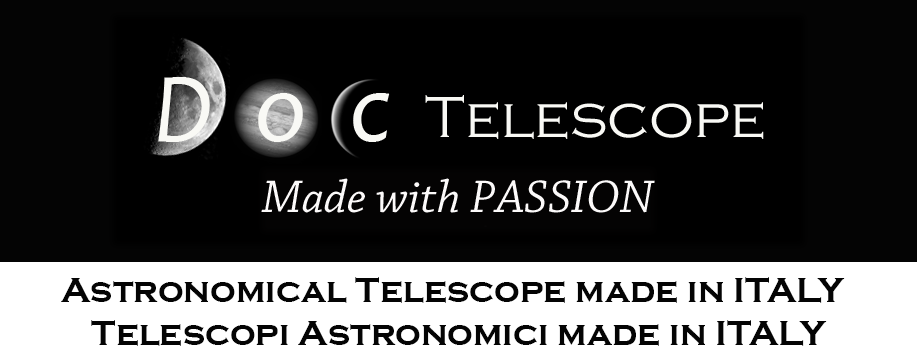DocTelescope was born after 16 years of experimentation, testing tool after tool the solutions that best suited and are suited to its functionality.
As an astrophotographer www.marcoguidihires.com I wanted to try coupling and joint systems, thicknesses and diameters from 300mm to 600mm.
I have not neglected the study of the cells with relative cooling systems and extraction of the boundary layer using the Roddier test, the only system for the verification and control of the effective yield of a given optic mounted in the cell, all this with the collaboration of Prof. Mauro da Lio who is a professor of mechanical engineering at the University of Trento and a European researcher in the field of robotic systems.
The reason why the customer should choose DocTelescope lies in the possibility and ability to fulfill all the requests of the end user by optimizing the structure, dimensions, focus extraction, full light field, motorization and everything that the novice or advanced amateur astronomer or professional wishes.
This is possible thanks to our collaborations with companies specialized in precision mechanics for the realization of some components made by laser cutting and CNC machines.
Features of the DocTelescope LaserMAX II Series telescopes:
Entirely made with laser cutting
Zero push-ups
Stainless steel ball tube terminals
Quick assembly and disassembly
Perfect tightness of collimation from the horizon to the zenith
AZ axis movement on SKF / stainless steel precision bearings
ALT axis movement on SKF and teflon / stainless steel bearings
Primary mirror cell with 18 support points
Secondary cage made by laser cutting
Spider laser-cut in 316 stainless steel with collimable secondary mirror support
Cooling system
Primary mirror anti-tilt system
- DocTelescope nasce dopo 16 anni di sperimentazione testando strumento dopo strumento le soluzioni che più si addicevano e si addicono alla sua funzionalità.
- Da astrofotografo www.marcoguidihires.com ho voluto provare sistemi di innesto e snodo, spessori e diametri dai 300mm ai 600mm .
- Non ho tralasciato lo studio delle celle con relativi sistemi di raffreddamento ed estrazione dello strato limite utilizzando il test di Roddier, unico sistema per la verifica ed il controllo dell'effettiva resa di una determinata ottica montata in cella, tutto questo avvalendomi della collaborazione del Prof. Mauro da Lio che è docente di Ingegneria meccanica presso l'università di Trento e ricercatore europeo in materia di sistemi robotizzati .
- Il motivo per cui il cliente dovrebbe scegliere DocTelescope risiede nella possibilità e capacità di adempiere a tutte le richieste dell'utente finale ottimizzando struttura, ingombri, estrazione del fuoco, campo di piena luce, motorizzazione e tutto ciò che l'astrofilo neofita o evoluto o professionista desideri.
Questo è possibile grazie alle nostre collaborazioni con aziende specializzate nella meccanica di precisione per la realizzazione di alcuni componenti realizzati tramite taglio laser e macchine CNC.
Caratteristiche dei telescopi DocTelescope serie LaserMAX II :
Interamente in metallo
Interamente realizzato al taglio laser
Zero flessioni
Terminali dei tubi a sfera inox
Montaggio e smontaggio rapido
Perfetta tenuta della collimazione dall’orizzonte allo zenith
Movimento asse AZ su cuscinetti di precisione SKF /inox
Movimento asse ALT su cuscinetti SKF e teflon /inox
Cella specchio primario a 18 punti d’appoggio
Secondary cage realizzato al taglio laser
Spider realizzato al taglio laser in acciaio inox 316 con
supporto specchio secondario collimabile
Sistema di raffreddamento
Sistema antiribaltamento specchio primario
